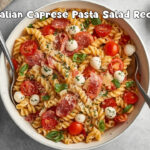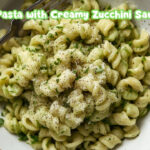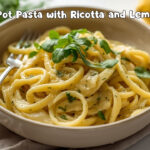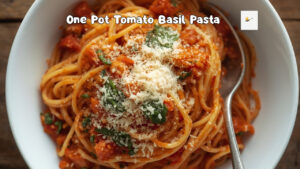Table of Contents
TogglePasta begins digesting within 30–60 minutes in the stomach, but complete digestion—including absorption and elimination—can take 24 to 72 hours.
Pasta has been a favorite food in many cultures around the world for a long time. Whether it’s served as spaghetti, penne, or fettuccine, it is a versatile dish enjoyed in countless forms around the world. But beyond the flavors and textures lies a common question: how long does it take for pasta to digest?
In this article on PastaSphere, I’ll share everything you need to know about how pasta and other foods move through our digestive system. From my personal habits to science-backed tips, we’ll dive deep into the topic.
We’ll first understand how digestion works, then focus on how long does it take for pasta to digest specifically. You’ll learn about what helps or slows digestion, what to pair with pasta for better digestion, and how to avoid digestive discomfort. Let’s get started with the basics.
What Is Digestion?
Digestion is the biological digestive process by which your body breaks down food into smaller components, like glucose, amino acids, and fatty acids, that can be absorbed and utilized.
Here’s how the digestive process works:
- Digestion starts in the mouth, where saliva has enzymes that begin breaking down carbs.
- Continues in the stomach, where acids and enzymes break down food into a semi-liquid.
- Then it moves into the small intestine, where the body takes in nutrients and sends them into the blood.
- Ends in the large intestine, where waste is processed and eliminated.
Different foods digest at different speeds. Here’s a rough estimate:
- Raw fruits/vegetables: 30–60 minutes
- Protein-rich foods: 2–3 hours
- Fatty meals: 4–6 hours
- Pasta: Typically 2–4 hours depending on several variables
Understanding the Digestive Process

In this section, we’ll talk about how digestion works from the mouth, esophagus, stomach, small intestine, large intestine, rectum, and anus. Each part has a specific job.
1. The Mouth
Digestion starts here. When you eat pasta, make sure to chew it well. Chewing mixes food with saliva, which contains enzymes that begin breaking down carbohydrates.
2. The Throat
After chewing, the food passes through the throat to reach the next stage.
3. The Esophagus
From the throat, food travels down the esophagus. This is a muscular tube that moves the chewed pasta to the stomach.
4. The Stomach
Here, the real breakdown happens. Stomach acid and enzymes are secreted to process the food into a semi-liquid form.
5. The Small Intestine
This is where most nutrients are absorbed. Carbohydrates from pasta turn into glucose molecules, and then enter the bloodstream to fuel the body.
6. The Colon
Whatever is not absorbed goes to the large intestine, where water and electrolytes are absorbed, and waste products are prepared to be eliminated.
If you ate whole wheat pasta, any undigested dietary fiber or resistant starch will reach this stage. It’s fermented by gut bacteria, potentially causing digestive discomfort like gas or bloating.
Total Time: While glucose can be absorbed within 2–4 hours, the full digestive process, including elimination, can take 24 to 72 hours.
Wait a minute! Do you know “why is fiber in pasta a necessary nutrient and how it impacts on health”?
What? No? Don’t worry here my detailed article, Click now to know!
Health Benefits of High-Fiber in Pasta
What Happens When You Eat Starchy Carbohydrates?
Pasta is made from complex carbohydrates. These are composed of long chains of glucose molecules, which makes them take a little longer to digest than simple carbohydrates. Their primary function is to supply glucose to the cells, tissues, and organs, giving us prolonged energy. That’s why pasta is a common food in many traditional dishes around the world.
Simple vs. Complex Carbohydrates: Where Pasta Fits In

Carbohydrates can be divided into simple and complex:
- Simple carbohydrates: Found in candy, juice, and soda. They digest quickly, spiking blood sugar.
- Complex carbohydrates: These are present in foods like whole grains, beans, and pasta. These digest slower due to their structure.
Pasta is rich in complex carbohydrates, especially when made from whole grains or legumes. These offer sustained energy and greater nutritional value due to fiber and B-vitamins.
Whole Wheat vs. Refined Pasta Digestion
Here’s a detailed comparison:

- Whole wheat pasta slows the digestive process, reducing glucose spikes.
- Refined pasta, though faster to digest, lacks fiber, leading to quicker hunger return.
What Factors Determine the Transit Time Food Takes to Digest?
Different people digest food at different speeds. Let’s see what makes that happen.
Factors That Affect How Long Digestion Takes
- Age, sex, medical conditions, and medications
- Sensitivity to certain foods
- The type of pasta (whole grain pasta is easier to digest than refined pasta)
- Whether you’re overeating or eating slowly
- Overcooking or undercooking pasta (soft pasta releases starches faster)
How Cooking Methods Influence Digestion Time
Now that we understand the digestion process, know about pasta, and have explored the factors that affect digestion time, let’s move on to how cooking methods influence digestion time:

- Al dente pasta: A bit firm, it digests more slowly and causes a smaller rise a lower glycemic index.
- Overcooked pasta: Softer, breaks down quickly, spikes blood sugar, digests faster.
To optimize your digestive comfort and blood sugar, stick with al dente preparation.
Does Portion Size Matter?
Absolutely yes! A huge bowl of pasta:
- Takes longer to digest
- Increases the likelihood of digestive discomfort
- May result in sluggishness or bloating
Instead, aim for 1 to 1.5 cups cooked per serving, balanced with vegetables, lean protein, and healthy fats.
Tips to Improve Pasta Digestion
Want to boost how your body handles pasta? Try these tips:
- Chew thoroughly – digestion starts in the mouth.
- Eat slowly – it gives your body time to process.
- Stay hydrated – water supports enzymatic activity.
- Incorporate digestive spices like ginger, fennel, or mint.
- Avoid lying down after meals – take a short walk instead.
- Fermented foods (like yogurt or kimchi) support gut flora and improve digestion.
The Best Types of Pasta for Easy Digestion
Spiral-shaped pasta like fusilli or tubular-shaped pasta like penne digests better than flat ones like linguine or fettuccine.
Foods to Pair with Pasta for Better Digestion
- Lean protein (like grilled chicken)
- Healthy fats (like olive oil)
- Vegetables
- Probiotic toppings
Pasta and Digestive Discomfort: What to Know

Though pasta is generally easy to digest, it can cause digestive discomfort in some cases:
- Gluten intolerance or celiac disease: Wheat-based pasta contains gluten, which inflames the gut lining in sensitive individuals.
- IBS (Irritable Bowel Syndrome): Wheat pasta contains FODMAPs, fermentable sugars that trigger gas and bloating.
- Lactose or fat in sauces: A creamy Alfredo might be harder to digest than a light tomato sauce.
How Many Calories in Chicken Pasta Alfredo
If you experience issues, try:
- Gluten-free pasta (rice, quinoa, corn, or buckwheat-based)
- Low-FODMAP alternatives (zucchini noodles, chickpea pasta in moderation)
- Simpler recipes with fewer heavy ingredients
Balancing Pasta in Your Diet
To maintain digestive health while enjoying pasta:
- Choose whole wheat or legume-based pasta for better nutritional value.
- Add non-starchy vegetables like broccoli, spinach, or bell peppers.
- Include lean protein such as grilled chicken, tofu, or shrimp.
- Incorporate healthy fats (olive oil, avocado) for satiety and better vitamin absorption.
- Drink water before, during, and after your meal.
Nutritional Value of Pasta
Pasta is a significant source of essential macronutrients like carbohydrates. It’s rich in fiber, vitamins, and minerals, especially if made from whole grains.
When eaten in moderation, pasta is a beneficial and nutritious addition to meals. It promotes healthy bowel movements, especially when combined with healthy fats like olive oil or avocado.
Reheating Improves Nutrition Too
Recent studies show reheated pasta offers even more resistant starch.
Is Pasta Healthier When It’s Eaten Cold?
Yes, it can reduce rapid spikes in blood sugar levels, which supports overall health.
Signs of Slow Pasta Digestion
If your body struggles to digest pasta, you might notice:
- Bloating
- Gas
- Heartburn
- Fatigue
- Constipation
These symptoms indicate a delayed or inefficient digestive process, possibly due to overconsumption, low enzyme production, or food intolerances.
Digestion and Diarrhoea
Sometimes eating too much refined pasta can cause bloating, constipation, and diarrhea. Choosing whole grain pasta helps.
- Avoid heavy cream sauces if you’re sensitive
- Drink plenty of water
- Eat probiotic-rich foods
Examples of Easy-to-Digest Foods
- Bananas
- Boiled potatoes
- Rice
- Steamed veggies`
- Toast
Pasta’s Impact on Gut Health
Pasta can promote gut health when paired with probiotic-rich foods like yogurt or kefir. This combination brings positive results for digestion.
Exposing Common Myths About Pasta and Digestion
Some say pasta is bad for health, but that’s false. It’s a low-fat food, helps maintain a healthy weight, and may reduce the risk of heart disease.
Conclusion: How Long Does It Take For Pasta To Digest?
Digesting pasta is a multi-step digestive process influenced by fiber, protein, nutritional value, cooking methods, and personal digestive health. While pasta can sometimes lead to digestive discomfort, making mindful choices—like opting for whole grain varieties, moderate portions, and balanced meals—can make a world of difference.
FAQs About How Long Does It Take For Pasta To Digest
Does pasta cause gas?
Not usually, unless it’s eaten in excess or with heavy sauces.
Can I eat pasta if I have lactose intolerance?
Yes, but avoid cream-based sauces and use tomato-based sauces instead, which are easier to digest and contain lycopene content.
How to dry fresh pasta before cooking?
After shaping it, lay it on a floured surface or rack for 12-24 hours depending on humidity. Drying properly helps it cook evenly.
How to dry fresh pasta for long-term storage?
A: Dry for at least 24 hours, then store in airtight containers in a cool, dark place.
What Helps Digestion After Eating?
Drinking plenty of water, taking breaks, walking, and eating herbs and spices like ginger, peppermint, and fennel can help.
How Long Does It Take for the Stomach to Fully Empty After Eating?
It usually takes 4-6 hours. If you combine pasta with lean protein, it may stay a bit longer to ensure better absorbing of nutrients.
What Foods Take Long to Digest?
Foods high in fat, protein, and refined pasta take longer. If you pair pasta with cream-based sauces like Alfredo sauce, the digestion time increases.
How Long Does It Take Water to Digest?
Water is usually absorbed quickly in the stomach and small intestine within 5-15 minutes.
How Do You Know Your Stomach Is Full?
You feel pressure in your abdomen, may burp, or just don’t want to eat more. I always stop eating before I feel too full.
Is It Possible to Tell When Your Stomach Is Empty?
Yes, feeling hungry or hearing your stomach growl can be signs that it’s empty. This usually happens several hours after eating.













